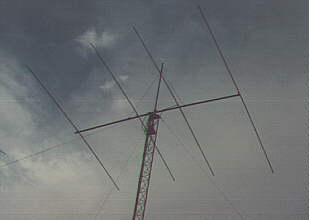|
The power of ice on a mountaintop... 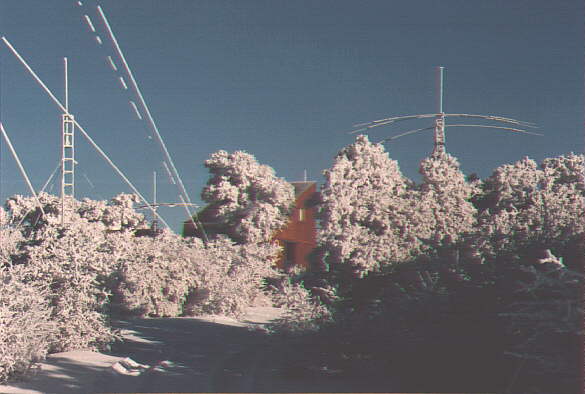 Sometimes natural forces can at once create beauty and cause violent
destruction. This photo was taken soon after a major ice storm at
the Tehachapi Mountain "antenna farm." All of the trees, antennas
and guy cables are covered with a thick layer of ice. The massive
weight of the ice--coupled with the inevitable high winds that accompany
ice storms--can destroy large trees (and antennas).
 Wind-driven moisture in low clouds and fog can cause a buildup
of several inches of ice on one side of an antenna, tree or building.
Aircraft pilots are well acquainted with this effect; they call it rime
icing. It can cause disastrous airplane crashes--and antenna
crashes. Even this handrail on the deck of my cabin has heavy ice
on the windward side, but almost none on top. This is NOT the result
of a snowstorm.
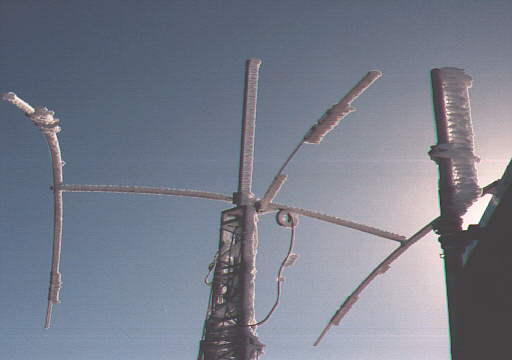 This photo shows why antennas can be destroyed by ice. Note the
pipe mast at right. It is less than two inches in diameter, but it
has about four inches of ice on the windward side. There is no ice
on the other side. The elements of this antenna (the horizontal aluminum
tubing) are only about one inch in diameter--and utterly incapable of supporting
the weight of the ice. (This antenna failed soon after this picture
was taken.) The photos below show what happens to antennas in a major
ice storm--the sort of storm that occurs six or eight times a year at 7,000
feet elevation in the Tehachapi Mountains.
...And a few days later.
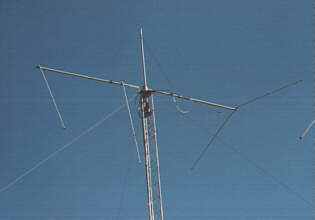 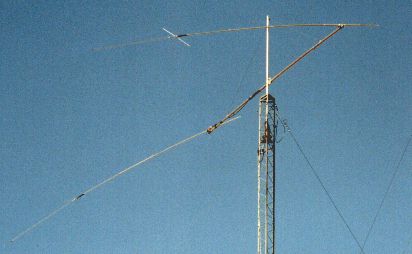
This is a 2-element 40-meter antenna; half of each element has broken off. This 20-meter antenna was badly twisted in the same storm.
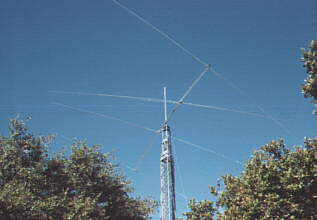
-Wayne Overbeck
|
